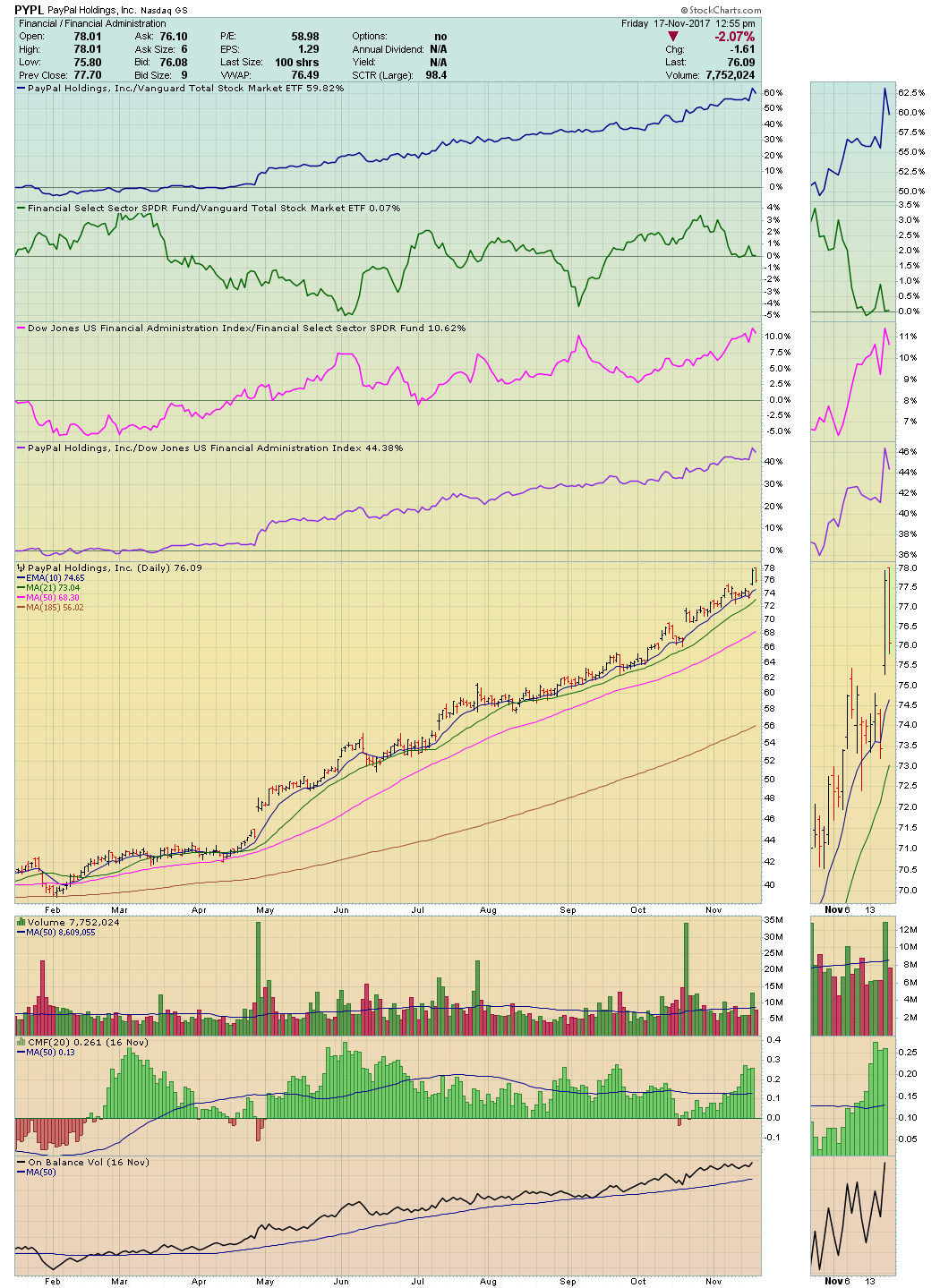 “Rule #1: Never lose Money.”
“Rule #1: Never lose Money.”
“Rule #2: Never forget Rule #1.”
—Warren Buffett
Sure, a lot of investors dissect every word that Warren Buffett writes in the annual report for Berkshire Hathaway. For years, these Buffett-isms have provided investors with profitable insights. In a similar vein, I found that the letter Jeff Bezos wrote recently to his shareholders was also full of pithy insights.
Bezos writes, “You stop looking at outcomes and just make sure you’re doing the process right.” Sage advice for investors! You best stop obsessing about profits and losses— instead, you make sure you’re following your methodology consistently. Surprise, surprise — the profits arrive! Focus on the process, not the outcomes. The outcomes are the wrong target as they mess with your ability to execute properly.
Bezos writes, “You can be competitor focused, you can be product focused, you can be technology focused, you can be business model focused, and there are more. But in my view, obsessive customer focus is by far the most protective.”
He could be talking about fundamental analysis of the stock markets with a million different inputs on which investors can focus. I read his “obsessive customer focus” as my own obsessive focus on the markets charts. In other words, if you read the customers wrong or you read the equity charts wrong, you will lose money. Focus on what matters.
Bezos talks about Amazon’s customer-centric approach. In other words, customers know best. Customers know all. To paraphrase for our investing world, the advantages of a market-centric approach is that markets know best. Markets know all. It’s not what gurus say or journalists write. It’s what investors are actually doing with their money that matters. It’s how they are voting each day in the markets with real money as buyers or sellers. It’s how those auction results are reflected on market charts — that’s all that matters.
Bezos suggests that it’s best to “Embrace external trends”. He goes on to write, “If you fight them, you’re probably fighting the future. Embrace them and you have a tailwind.”
I’d say to my readers, there you have the Tensile Trading methodology in a nutshell. It’s all about putting the tailwinds (i.e. the market probabilities) at your back and embracing the trends. The four core elements of Tensile Trading are all about investing in equities that are doing the following:
- Out-trending the market.
- Being part of a sector that it is out-trending the market.
- Being part of an industry that is out-trending all the other industries in that sector.
- Being the strongest equity in that muscular industry group.
Jeff Bezos calls that a “tailwind”. We call it investing with the probabilities. Either one works. Subscribers on stockcharts.com can easily use the pulldown menu in ChartStyles, click on “Gatis Roze” and voila! There’s your probability-busting tailwind enhanced chart for the equity of your choice.

Bezos writes, “You have to somehow make high-quality, high velocity decisions.” He then concludes that “Speed matters in business.”
Taking action matters in the stock markets, too. In our internet world, information rips around the globe at lightning speed. We investors must make high-quality high-velocity decisions as well. Procrastinating or waiting to find out why your price chart is collapsing can be financial suicide. Death by inaction. Speed matters. Act on what you see on your charts and ask why later.
Bezos says, “Never use a one-size-fits-all decision making process.”
For us investors, there is no truer statement than this. Your methodology has to be your own — otherwise, you will not embrace it when you need to embrace it. This is why those “black box” systems fail. This is why there is no Holy Grail in the stock market. It’s all about YOU — the Investor Self developing a decision-making process that truly custom fits you.
Finally, Jeff Bezos notes that “Most decisions should probably be made with somewhere around 70% of the information you wish you had. If you wait for 90%, in most cases, you’re probably being slow.”
Our book, DVDs and blogs are peppered with discussions and warnings about the investor’s ongoing challenges of avoiding the “paralysis of perfection”. You should just keep reminding yourself that you are a “recovering perfectionist”!
In closing, I’ll draw upon yet another annual report — this time by Satya Nadella, the CEO of Microsoft. He writes about the modern workplace and a new paradigm that is constantly driven by global innovation, increasingly complex threats, and constantly impactful changes in mixed reality, artificial intelligence and quantum computing.
As an individual investor, my core competency has to be to understand “what” is happening in the markets. To try and grasp the “why” and how those changes will impact the stock’s price is far beyond my bandwidth. For myself, the currency that has produced consistent profits for decades now is a hybrid of both fundamental and technical analysis. Earnings-centric fundamentals blended with technical analysis of my charts.
As companies continue to innovate boldly, I simply focus on the impactfulness of those efforts on their price charts. The charts tell me nearly all I need to know to produce stock market profits. We individual investors can easily bear witness to the cream of new corporations rising to the top and thereby answering the key question: “what” must we invest in? We’ll have to leave the “why” for Jeff Bezos and Satya Nadella.
Trade well; trade with discipline!
- Gatis Roze, MBA, CMT
- Grayson Roze
- Author, Tensile Trading: The 10 Essential Stages of Stock Market Mastery (Wiley, 2016)
- Presenter of the best-selling Tensile Trading DVD seminar
- Presenter of the How to Master Your Asset Allocation Profile DVD seminar
- Developer of the StockCharts.com Tensile Trading ChartPack
